Editor’s Note: This article was updated November 26, 2020.
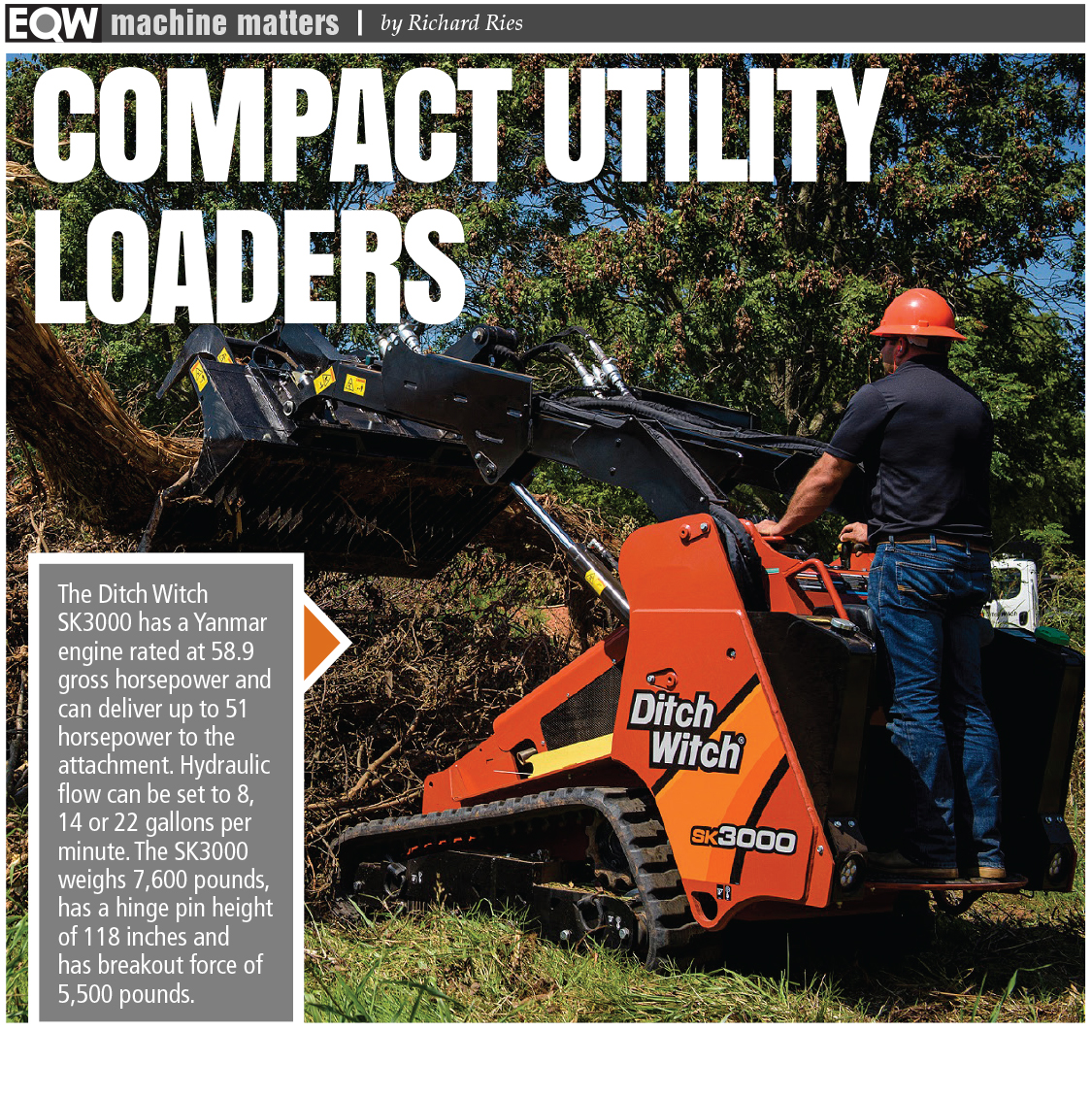
As the compact utility loader market continues to grow in popularity, CULs (also known as mini skid steers and stand-on skid steers among other names) are getting larger, more powerful and, because of their lower prices, even challenging skid steers and compact track loaders on some jobsites.
“They are definitely a growth category for Vermeer, especially over the past five years,” says Brett Newendorp, Vermeer landscape marketing manager.
Newendorp cites several reasons for this surge in sales. Customers are bringing their first CULs into their fleet. They’re adding crews and equipment in response to a strong construction market. Rental remains active. A CUL can be operated by a newer employee. An expanding list of tools and attachments enhances CULs’ versatility.
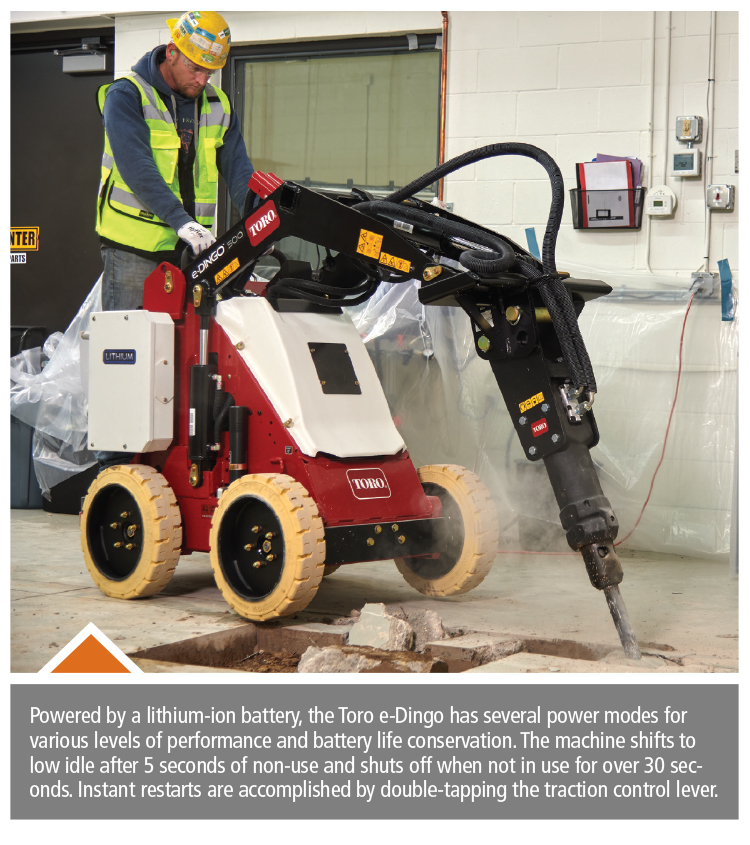 “And there’s an entrepreneurial spirit in construction,” says Newendorp. “A lot of people want to enter this business. Machines with this level of capability at this level of investment speak to that.”
“And there’s an entrepreneurial spirit in construction,” says Newendorp. “A lot of people want to enter this business. Machines with this level of capability at this level of investment speak to that.”
One of the drivers for these increases is rising prices in other small equipment. “Increased operating capacities of compact utility loaders has offset the increased expense due to Tier 4 Final emissions regulations compliance of larger, higher-horsepower skid steers and other machines,” says Jason Showers, product manager, tree care products for Morbark, makers of Boxer CULs. “Large CULs have become attractive alternatives to compact equipment and skid steer loaders because of their lower initial investment.”
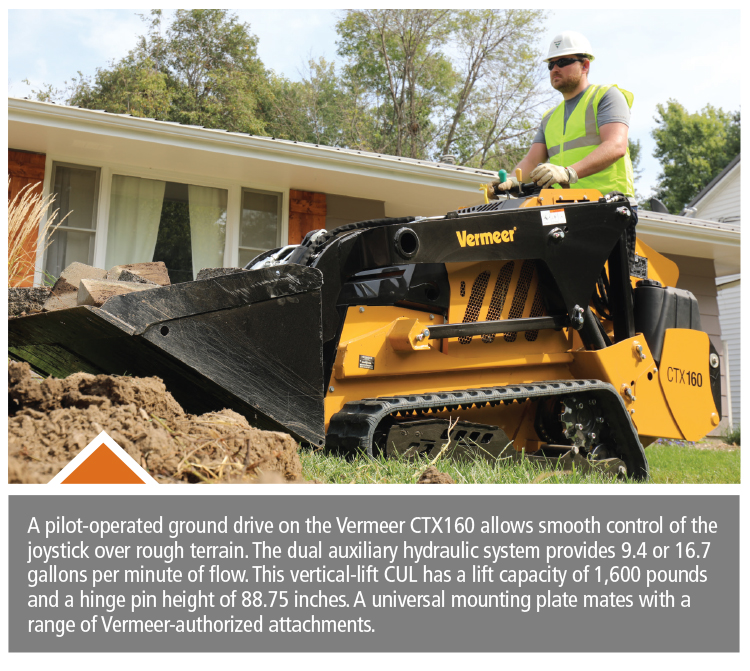 But that approach can backfire, warns Showers: “While price is important, the most common buying mistake we see is purchasing a machine too small for the application.” Overloading a machine creates a dangerous environment for the operator, as well as costly repairs and downtime. Even if the equipment is marginally acceptable now, “a machine on the fringe of working in the current application does not allow for future expansion of workload. Going smaller is not always the answer.”
But that approach can backfire, warns Showers: “While price is important, the most common buying mistake we see is purchasing a machine too small for the application.” Overloading a machine creates a dangerous environment for the operator, as well as costly repairs and downtime. Even if the equipment is marginally acceptable now, “a machine on the fringe of working in the current application does not allow for future expansion of workload. Going smaller is not always the answer.”
When going smaller does make sense, choosing from the swelling list of CULs can be challenging. Seth Mathesen, Ditch Witch category manager, provides some guidance:
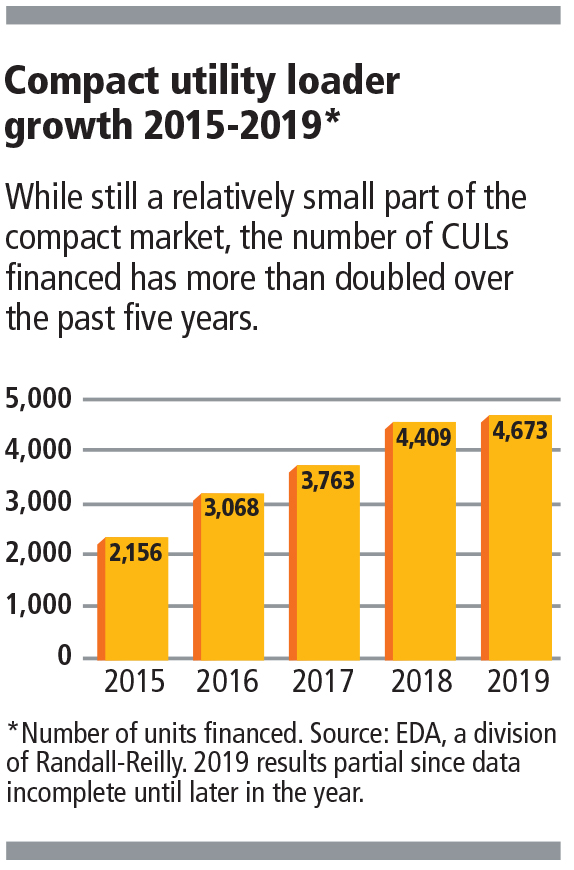 “Residential landscapers navigate close corners and space-restricted areas. A compact, lightweight unit such as the Ditch Witch SK600 is right for these applications. Contractors in tree care or construction need a machine with a higher operating capacity, such as the Ditch Witch SK3000.”
“Residential landscapers navigate close corners and space-restricted areas. A compact, lightweight unit such as the Ditch Witch SK600 is right for these applications. Contractors in tree care or construction need a machine with a higher operating capacity, such as the Ditch Witch SK3000.”
CULs also simplify transport. “Even with a couple of attachments included on the trailer, CULs tow below CDL limits,” says Newendorp.
Customers who haven’t stayed up to date with CUL development will find a variety of advancements with the current equipment. “Not long ago these machines maxed out at one-third to one-half the operating capacity of today’s models,” says Newendorp. “Many had air-cooled gasoline engines. Today’s compact utility loaders are far advanced from models available in the past.”
He and others recommend renting or arranging a dealer demo to get familiar with the current crop.
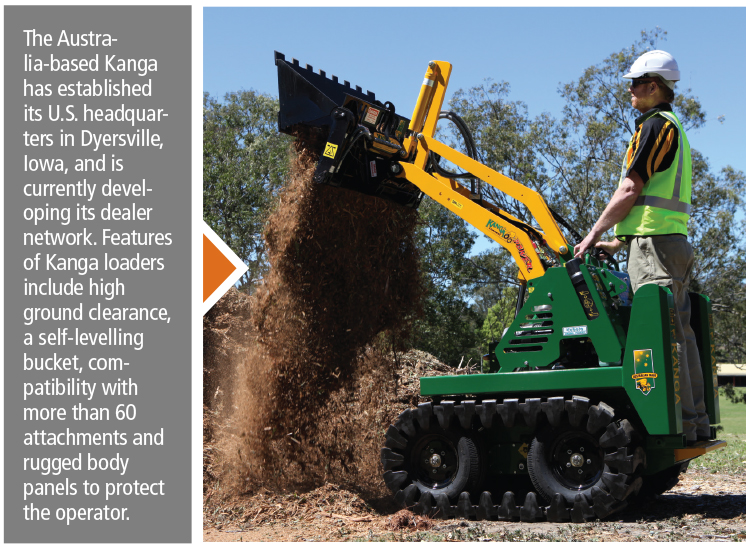 And a final note on machine selection: mounting systems on these machines are not standardized. Be sure the CUL you’re considering will accept the tools and attachments you now have, or commit to buying new tools and attachments to fit your new loader. If this is your first CUL and you don’t have accessories yet, check that the mounting system is compatible with the attachments you anticipate buying.
And a final note on machine selection: mounting systems on these machines are not standardized. Be sure the CUL you’re considering will accept the tools and attachments you now have, or commit to buying new tools and attachments to fit your new loader. If this is your first CUL and you don’t have accessories yet, check that the mounting system is compatible with the attachments you anticipate buying.
Here’s an overview of recent advancements to existing machines plus a list of new machines.
Bobcat
Bobcat has two CULs in its catalog, the MT55 and MT85. Although the MT85 is the larger of the two, with an 850-pound ROC at 35 percent of tipping load, it’s still small enough to work in tight spaces. Pelletieri Associates of New Hampshire, which has 40 employees and owns 10 pieces of Bobcat equipment, chose the MT85 for this reason.
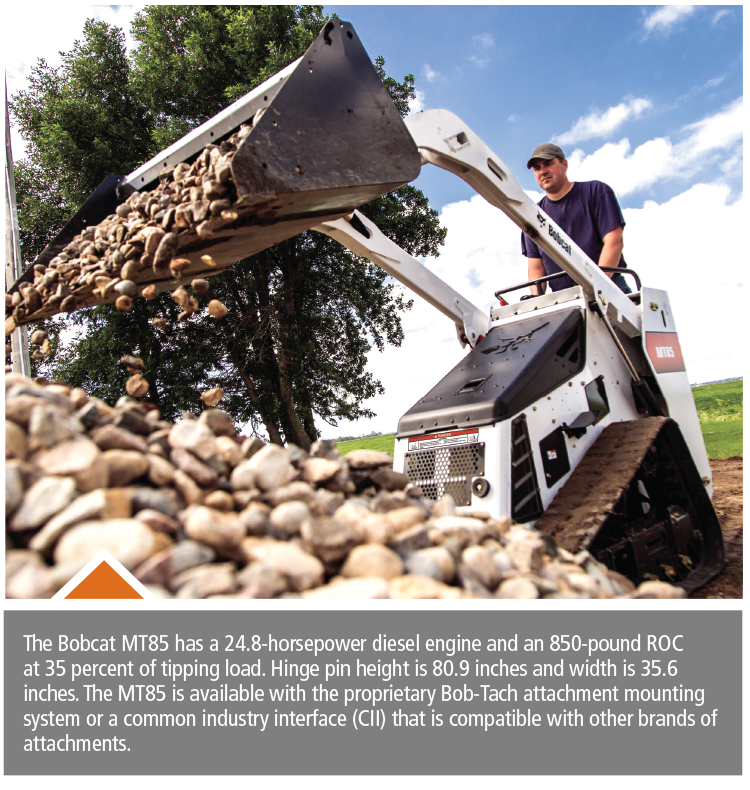 PAI does work around the country and rents the MT85 in other locations. It performs oceanfront and mountainside site prep, and the MT85 is robust enough for those tasks. The company also develops rooftop gardens and recreational paths, where the MT85’s nimble nature comes into play.
PAI does work around the country and rents the MT85 in other locations. It performs oceanfront and mountainside site prep, and the MT85 is robust enough for those tasks. The company also develops rooftop gardens and recreational paths, where the MT85’s nimble nature comes into play.
“We were doing a woodland path in Pennsylvania that was going through a park,” says George Pelletieri, “and no other machine would have been able to navigate the terrain and the curves.”
Boxer
The 700HDX has a redesigned track expansion system with two stop bolts per side instead of the previous single-bolt design, making the entire system more robust. The loader function control valve has been redesigned for smoother boom and bucket operation, which also provides additional hydraulic holding power for suspended loads as well as reduced stiffness in the joystick.
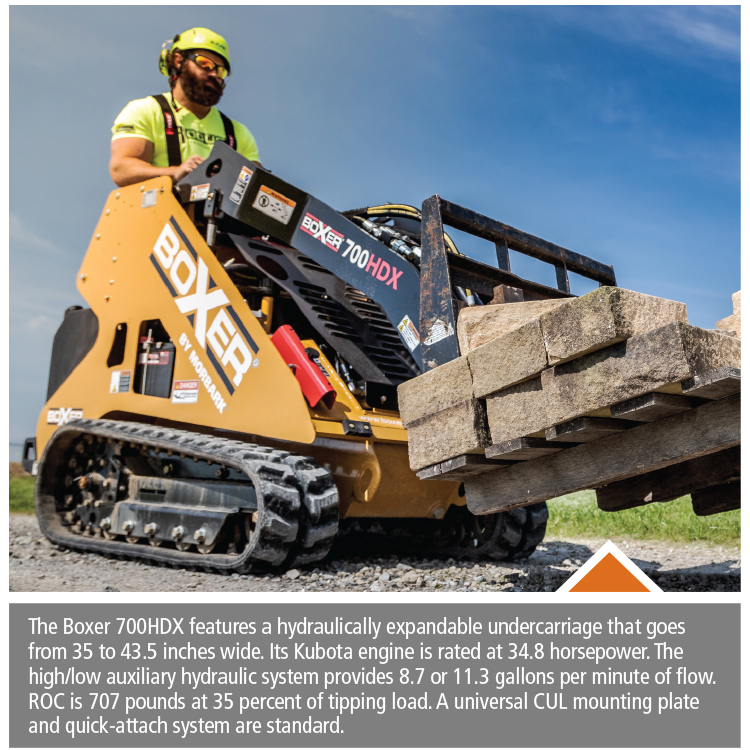 The 600HD also has an improved loader function control valve plus an upgraded electrical circuit. All four models in the Boxer lineup now have powder-coat finishes for greater durability.
The 600HD also has an improved loader function control valve plus an upgraded electrical circuit. All four models in the Boxer lineup now have powder-coat finishes for greater durability.
Ditch Witch
The company recently unveiled the SK3000 full-size “stand-on skid steer.” (Ditch Witch does not use the term “compact utility loader.” While acceptance of “compact utility loader” is growing, the market is far from settling on this term.)
“This is the most powerful stand-on skid steer in the market,” says Mathesen, “with an operating capacity of 3,100 pounds – 50 percent more than the closest competitor – and the ability to apply 5,500 pounds of breakout force. The SK3000 is designed to complete jobs typically reserved for a traditional caged skid steer but with the convenience and visibility of a stand-on machine.”
Kubota
Kubota unveiled its first model in the segment, the SCL1000, at ConExpo 2020. The machine will be available in the second half of this year.
Kubota says it aimed the 1,000-pound rated operating capacity machine at one of the faster growing size segments in the CUL market. “Our customers and dealers were telling us they needed a bit bigger machine than the smaller units that are out there. We thought this would be a good entry point,” says Tim Boulds, Kubota construction equipment product operations manager.
So how is Kubota distinguishing its product — which it calls a stand-on track loader — in a field with both long-established players (Bobcat, Toro, Ditch Witch, Vermeer, Boxer) and newer entries (Kanga, Sherpa)?
One way is having a standard 9.8-inch wide track compared with the more typical 7-inch track, all while still maintaining a 36-inch wide total machine width, Boulds says. The wide track has a 4.0 psi ground pressure, giving the machine a softer footprint on sensitive areas.
The SCL1000 also features a keyless start and password protection on its dash, “and no one else has that,” Boulds says. With a 5.1-mph top speed, which Kubota says is best in class, the machine can also reduce time on the job as it quickly maneuvers through gates and other tight quarters.
In addition, the vertical-lift unit has a sealed-and-lubed undercarriage that’s welded to the the mainframe of the body. The loader boom also has an SVL compact track loader heritage, Boulds says.
Powered by a 24.8 horsepower turbo-charged Kubota diesel engine, the SCL1000 has a hinge pin height of 84.7 inches and a reach of 25.9 inches at a 45-degree dump angle.
Toro
The e-Dingo 500, introduced as a prototype at last year’s Rental Show, is now slated to be in production this spring. Powered by a lithium-ion battery, the zero-emission, low-noise e-Dingo uses an Auto Idle feature to automatically power off the motor after it’s been idle for 30 seconds. By double-tapping the traction control lever, operators can instantly restart the machine.
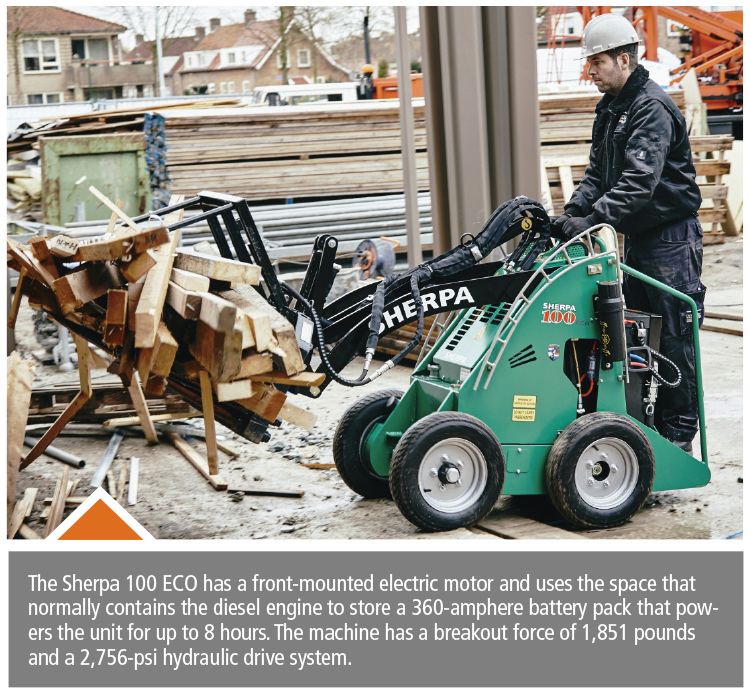 Toro wanted to make sure the e-Dingo gave users the same familiar controls and offered full performance and power as its diesel counterpart, says Jay Thaker, Toro rental marketing manager. “The e-Dingo is ideal for indoor construction jobs requiring fast completion times and reduced overall costs,” he says. “These applications include demolition, flooring and renovation work.”
Toro wanted to make sure the e-Dingo gave users the same familiar controls and offered full performance and power as its diesel counterpart, says Jay Thaker, Toro rental marketing manager. “The e-Dingo is ideal for indoor construction jobs requiring fast completion times and reduced overall costs,” he says. “These applications include demolition, flooring and renovation work.”
Maximum operating capacity is 515 pounds, and the e-Dingo can use all standard Dingo attachments, including buckets, grapples, breakers and forks. Toro’s 4-Paw independent four-wheel drive provides added traction and spin-turn performance for agility in tight workspaces.
In late 2018, Toro added the TXL 2000 to the Dingo catalog. Most notable are the telescoping loader arms, which provide a hinge pin height of 10 feet 3 inches when fully extended and the ability to dig below grade. Powered by a 49.6-horsepower Kubota engine, the TXL 2000 has a 2,000-pound ROC retracted (907 pounds fully extended) and features traction control as standard.
Vermeer
Since October 2016, Vermeer has rolled out three new models. The CTX100 has a 40-horsepower turbocharged Kohler KDI 1903 diesel engine and 1,035-pound ROC. The CTX100 is available with wide or narrow track configuration. The S925TX has a 925-pound ROC. Engine options are a Kubota V1505 rated at either 24.5 or 40 gross horsepower.
The CTX160 is the newest and largest model, launched in October 2019. Rated operating capacity is 1,600 pounds. Like the CTX100, the CTX160 uses a Kohler KDI 1903 engine rated at 40 horsepower.
Vermeer offers more than two dozen attachments for its compact utility loaders, many of which have been beefed up to handle the new models’ higher power.
